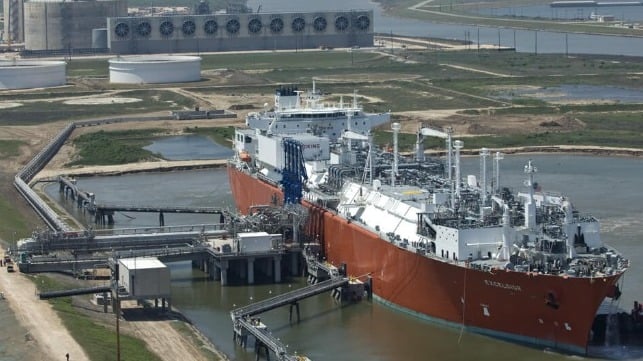Jiangsu Huadian Ganyu LNG terminal has started construction at Ganyu port, Lianyungang in China’s eastern Jiangsu province, the local government said on its website Feb. 13, with operations scheduled to start in 2026.
The project has a designed LNG receiving capacity of 3 million mt/year and is included in both the national natural gas development plan and the province’s 14th Five-Year Plan, the local government said.
Jiangsu Huadian Ganyu LNG terminal is one of the four LNG receiving projects approved by the central government in 2022, which have a combined maximum LNG receiving capacity of nearly 24 million mt/year. The other three are Guangdong Energy’s 6.1 million mt/year Huizhou LNG terminal, Hanas Energy’s 5.65 million mt/year Putian LNG terminal and Urban Rural Energy’s 6.2 million mt/year Yingkou LNG terminal.
Jiangsu Huadian Ganyu LNG terminal, which is being jointly developed by Huadian Jiangsu Energy, BP Gas & Power Investments and three other shareholders, obtained approval for construction from the country’s top economic planner, the National Development and Reform Commission, in June 2022.
Huadian Jiangsu Energy, a subsidiary of state-owned utility China Huadian Group Corp., will be the operator of the project, while BP holds a 10% stake along with gas processing rights. The other three shareholders are Lianyungang Port Group, Prism Energy International and JERA Power International.
Construction of the project was originally due to start in the second half of 2022 but is believed to have been delayed due to the COVID-19 resurgence in the country, market sources said.
Largest carriers
The project comprises construction of a wharf, storage tanks and a pipeline that connects to the regional natural gas distribution network and will have an annual LNG receiving capacity of 3 million mt, or 4.2 billion cubic meters, according to the Lianyungang government.
The planned total construction period is 33 months, and the wharf will include a new 150,000 mt LNG dock that is capable of berthing 217,000 cu m LNG carriers, which are the largest in the industry, the local government said.
The Jiangsu Huadian Ganyu LNG terminal project is Huadian Group’s first and BP’s second LNG terminal project in China.
The first Chinese LNG terminal project that BP participated in was the 7 million mt/year Guangdong Dapeng LNG terminal, in which it holds a 30% stake. Guangdong Dapeng LNG was China’s first pilot LNG import and regasification terminal, located in Shenzhen in the southern province of Guangdong, and started operations in September 2006.
China Huadian Group is one of China’s five largest state-owned power generation companies, and the investment represents growing direct participation by power companies in LNG supply and infrastructure, instead of going through national oil companies to procure fuel.
Jiangsu currently has three LNG terminals; state-owned PetroChina’s 6.5 million mt/year Rudong LNG terminal, privately owned Guanghui’s 5 million mt/year Qidong LNG terminal, and state-owned CNOOC’s 6 million mt/year Binhai LNG terminal.
In addition, provincial government-owned Jiangsu Guoxin and state-owned Zhenhua Oil are building a 2.95 million mt/year LNG terminal in Yangkou port in Jiangsu province, which is expected to start operations at end 2024.
Despite China’s negative natural gas demand growth amid high prices in 2022, the central government’s adherence to energy transition goals is expected to continue to support the country’s long-term natural gas demand growth.
China consumed 366.3 Bcm of natural gas in 2022, down 1.7% from 372.6 Bcm in 2021, NDRC data released in early February showed.
Source: Hellenic Shipping News






